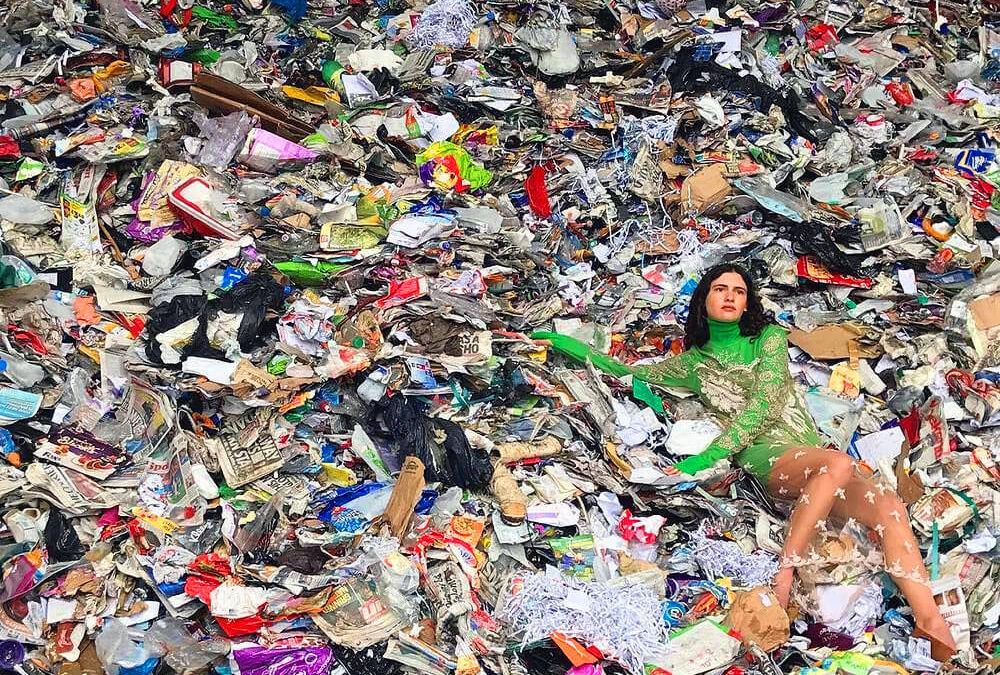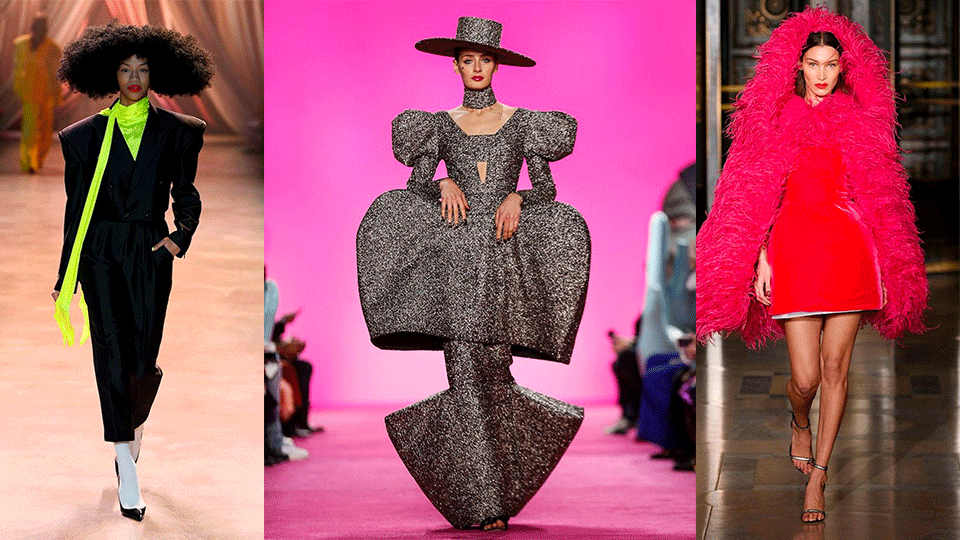- À New Wave to Fashion, À New Way of Living. Download Now on iOS Android Canada SS22
- hello@alahausse.ca
How to Implement the Waste Hierarchy Framework into the Fashion Industry and Our Own Closet in 2021

The Myth of Compulsive Buying Disorder
January 24, 2021
ÀLA.HAUSSE Presents: Your Complete #HAUSSEPEOPLE’s Introductory Guide Part 2: Fashion Resellers
January 29, 2021
Written by: Lori Fan, Edited by: Sheila Lau
Let’s start with some questions for fashion lovers to keep in mind—How often do you wear your “supposedly” favourite fashion pieces before you move on to your “new” favourites? What have you done with your unwanted fashion items?
Fashion and Sustainability
We at ÀLA.HAUSSE fashion ecosystem see fashion as a form of self-expression and part of the determining factors of one’s character development. It plays a variety of symbolic roles in each and every one of us. Many may even think that fashion consumption and sustainability are seemingly two opposed ideas. However, as we grow and get more involved in the industry, we’ve learned that a piece of fashion item is way more than just being something that is appreciated for its aesthetic. It has a significant impact on our planet and humanity itself.
Fast fashion culture has directed its consumers to become overly obsessed with the ever-changing trend, which often results in a great amount of impulsive purchase that gets discarded before its end of useful life. Wasteful fashion consumptions often put significant stress on sustainability. One should think outside the box and have a bigger vision when it comes to fashion and sustainability. So, if we say that fashion is part of self-expression, then we should all learn how to express fashion in a purposeful way and consume fashion with respect.
How Much Waste is Fashion Causing?
Back to the question that we asked for you to keep in mind, think about how many pieces of clothing that you no longer wear and are currently sitting in your closet. Must be a lot, I bet! So, just imagine, how much clothing has come to waste each year, even after going through a potentially harmful production process. To put this into numbers — the average consumer throws away 60% of their clothes each year; the economic impact of fashion waste has reached over $500 billion each year; and, an estimated 18.6 million tons of clothing ended up in landfills in the year 2020.
Without a doubt, fashion is a massive contributor to the 1.2 billion tons of greenhouse gas emissions released each year. If such trends continue without any waste management, the Ellen MacArthur Foundation estimate that more than 150 million tons of clothing waste will clog landfills in 30 years. And this is only how much the fashion consumers’ waste has caused our environment.
Social media has left a significant amount of pressure on the industry’s supply and demand. What’s also scary is the manufacturing process behind fashion. Manufacturing creates more than half a million tons of microfiber pollution that eventually ends up in the ocean. That’s 50 billion plastic bottles every year! How heartbreaking is it knowing that our ruthless fashion consumptions have caused such great levels of impact on our planet…
The Waste Hierarchy Pyramid
As a consumer, we are all responsible for cleaning up our own act! So how do we and manufacturers work on managing waste and reducing the fashion industry’s carbon footprint? Introducing the waste hierarchy, the EU has set out a clear hierarchy of waste management options in its legislation which can be implemented into multiple industries to help reduce wastage.
Sorry to break it to you, fashion lovers, but being a keen fashion recycler still isn’t the best option you can do to help the environment. In fact, recycling comes shockingly far down the waste hierarchy. Per the EU, the waste hierarchy establishes preferred program priorities based on sustainability, which comes in a pyramid form as a set of 6 priorities for the guide to efficient use of resources and energy to protect our environment. Sustainability options ranking in the priority order start from waste prevention, followed by reduce, reuse, recycle, recovery/repair and finally safe disposal.
There are several initiatives we as consumers and the industry can take to combat fashion waste. Let’s break the pyramid down and look into what we can do from each category.

Prevention
To start off, one should always trace back to the root of the problem in order to combat it. The prevention of waste sits at the top of the pyramid, which is the paramount point in the waste hierarchy. So how do we prevent it completely? Additive manufacturing, aka 3D printing, has become an emerging agenda in the industry. This type of manufacturing results in zero resource waste and has been increasingly used in the fashion industry. It gives fashion a wide range of possibilities during the creative and production process. Here you go, already a starter from the root of the problem!
Furthermore, social media promotion on non-ethical fashion-related contents should be prevented at all cost. As social media has become such a powerful marketplace, people have started shopping by influencers instead of by season, which results in a doubling of production in the fashion industry. Therefore, preventing the promotion of non-ethical fashion can help shift a large number of audience’s focus into the more sustainable fashion options. This would help expand the sustainable trend while influencing and educating consumers.
Reduce
Reduction can minimise the generation of waste fashion products. The most efficient way to interpret reducing waste is by reducing how often you purchase and by manufacturing them in a way that uses less resources. Simple, right?
On our consumer side, we should reduce spending money on fast fashion and instead make ethical fashion purchases. Choose timeless style pieces instead of chasing trends. Invest in fashion as opposed to wasting your money. Always think of quality over quantity. For fashion manufacturers, waterless denim finishing, low impact dyes and fabric dyeing with less water (or even without water) are becoming more and more common.
Reuse
Reuse also falls into the desirable options in waste hierarchy. This means using the same materials over and over again without any structural changes. It is a better option than recycling because it requires little or no process.
You want to look good while contributing to the environment? Now is when your no longer used clothes come in handy, a chance to change your closet to “clossets”, aka clothing assets. Luckily, we’ve got ALA.HAUSSE’s multi-functional fashion ecosystem mobile application to help the fashion lovers monetize their fashion assets while aiding positive cultural and industrial shifts towards fashion sustainability.
ÀLA.HAUSSE’s second hand digital marketplace offers a variety of options to trade:
Rebuy/Resell: Aside from your own closet, ÀLA.HAUSSE has overstock inventory and samples to satisfy your fashion cravings. ÀLA.HAUSSE sells fully authenticated secondhand fashion items. Why not save some extra bucks while looking chic with a purpose? After all, you are changing waste into assets.
Lend/Rent ( SS21) /Swap (BETA late 21): Who said your fashion assets cannot be exchanged? ÀLA.HAUSSE brings us a platform where you can connect with likeminded peers and swap your clothing to get more wear out of each piece (check out our Cost-Per-Wear article). A brilliant idea, especially for those who have expensive taste but don’t want to break their bank! Renting a statement piece will not only save you big on spending, but also indirectly inspire others to shift our consumerism habit, thus, sharing values on protecting our environment.
Without second hand marketplace platforms like your fav Depop/Poshmark/Grailed alike, AND, a multifunctional fashion ecosystem like ÀLA.HAUSSE, many of these fashion items would otherwise end up in recycling or in landfills. At this level of the waste hierarchy, we are challenging our throwaway culture and our habit of constantly buying brand new things.

Recycle/Repurpose
This level of waste hierarchy is all about turning waste products into new items. However, the downside of recycling is that it still takes a lot of energy to recycle the waste into new products. Oftentimes, recycled products undergo a reduction in quality compared to before. Even though it isn’t the best option to manage waste, it does not mean that you should not take recycling into consideration.
This is helpful for the clothes with conditions that can no longer be worn or sold. Instead of having them in landfills where it will probably take hundreds of years to decompose, you can try recycling or repurposing them. Some fashion businesses like to use the term “refashion”, where they are able to deconstruct textiles and fabrics and rework them into new fashion pieces. This creates value for fashion consumers and eliminates waste with closed loops.
So next time you don’t want something from your closet and cannot resell them, don’t give up on it yet. Try donating them to retail stores, value villages, or thrift stores; there is still a chance for value retention and a meaningful next use!

Recovery/Repair
The recovery process can be seen as repair in the fashion industry. Why throw away something when it can be repaired? This gives the added possibility that the repaired piece of clothing can find a new home. There are still some rays of hope when it comes to the second-last option of the waste hierarchy, before simply sending them to landfills. Generally, post-consumer’s textiles are collected as a method of material processing. After being sorted, they will be disassembled before they are redesigned and distributed again.

Furthermore, the recovery of energy is the transformation from waste to energy. These processes include burning waste to create electricity, anaerobic digestion and landfill gas recovery. Such a process is usually less preferred since it will still release harmful emissions. As a conscious consumer, you should always work your way down the waste hierarchy and try to prevent, reduce, reuse, and recycle before we resort to energy recovery. Because once the waste materials are turned into energy, they cannot be reused again.
Safe Disposal
This option sits at the bottom of the waste hierarchy because we should always aim to give textiles and garments a second life or more. It should be the last resort after all other possibilities have been considered. Clothing that are safely disposed undergo a pre-treatment, which includes physical, thermal, chemical or biological processes, changing the waste’s characteristics to reduce its harmfulness.
What Fashion Consumers Can Do
We hope we gave you a better idea on your fashion waste management. In the future, we must give more support to slow fashion brands, and to influence and educate others on fashion sustainability. If you are eager to become a seed of change for our planet, ask yourself these questions next time you make a new fashion purchase…
Who made this? Is the price fair? How open is the brand about their practice? What are the clothes made of? Do I truly need this? How many times will I wear this?
Going through these questions before we make our purchases while implementing the waste hierarchy into our fashion management will eventually help shift our consumerism habit and slow down the urgency on our fashion carbon footprint.
With that being said, we at ÀLA.HAUSSE have faith that our platform will aid fashion consumers in rethinking fashion as an ecosystem. It would be a great privilege to have you become a part of the contribution towards this uprising fashion sustainability movement, to help raise awareness and introduce a bigger vision to today’s fashion market, and to invent and promote alternative ways to distribute fashion.
Are you eager to become an alternative fashion player yet? Everyone is responsible for protecting our planet, and it can start from our ethical consumption. A better home is a better life. ÀLA.HAUSSE aspires that the sustainable fashion community can one day come together as a nation. Remember, hope can only be grown in the present to blossom in the future!
References:
- https://whatplastic.co.uk/blogs/blog/the-waste-hierarchy
- https://www.cattermoleconsulting.com/how-the-waste-hierarchy-pyramid-is-applicable-to-textiles/
- https://www.cattermoleconsulting.com/how-the-textile-industry-is-improving-resource-efficiency-and-moving-to-renewable-inputs/
- https://www.researchgate.net/publication/286809190_Sustainable_Waste_Management_Strategies_in_the_Fashion_Industry_Sector
- https://wtvox.com/fashion/fashion-waste/



